[Peas, Peavines and Vetchlings: The Genus Lathyrus East of the Cascade Mountains of Oregon and Washington]
Fewflower Pea, Few-flowered Pea, Few-flowered Peavine, Few-flowered Vetchling, Utah Sweet Pea
Lathyrus pauciflorus var. pauciflorus
Synonyms: Lathyrus pauciflorus ssp. pauciflorus, Lathyrus pauciflorus ssp. tenuior
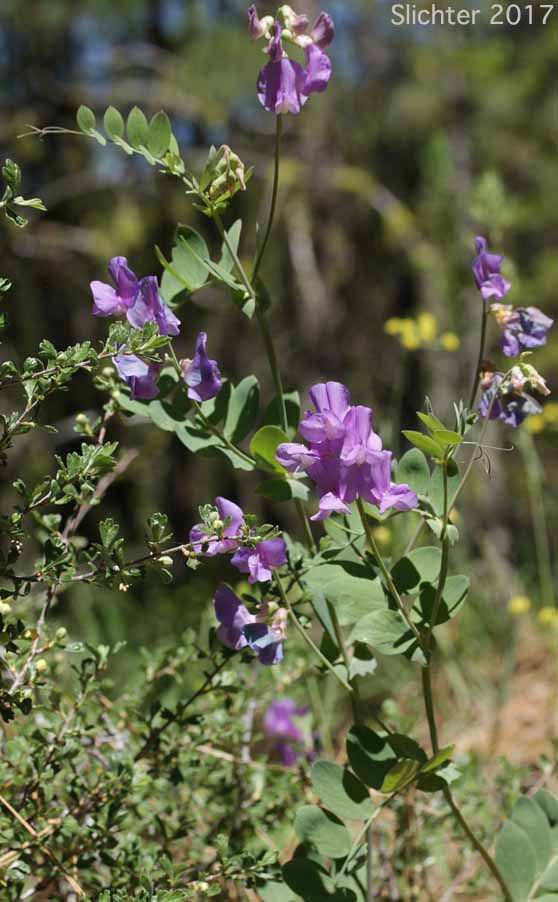 -
- 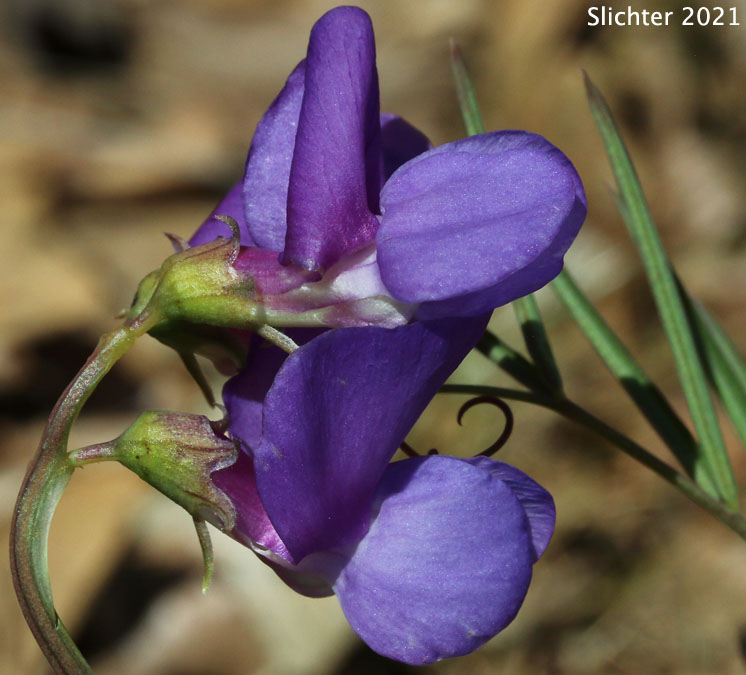
Fewflower peavine blooming along the main east-west access road through the northeastern portion of the Simcoe Mountains Unit of the Klickitat Wildlife Area.........May28, 2017. The photo at right shows a close-up view of a flower of fewflower peavine as seen at the oak forest edge south of Box Canyon Road, Simcoe Mountains Unit of the Klickitat Wildlife Area......April 15, 2021.
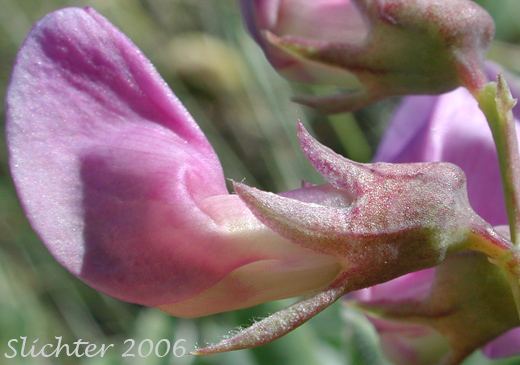 The photo at right shows a close-up of the calyx of Lathyrus
pauciflorus var. pauciflorus as seen at the crest of the Columbia Hills.........May 14, 2006. Note the short keel in relation to the length of the banner.
The photo at right shows a close-up of the calyx of Lathyrus
pauciflorus var. pauciflorus as seen at the crest of the Columbia Hills.........May 14, 2006. Note the short keel in relation to the length of the banner.
Characteristics:
Few-flowered pea is a spreading to erect perennial wildflower
with one to several simple to branched stems arising from 30-100 cm long from
a buried crown atop a taproot. The foliage and stout, angled stems are typically
glabrous or glaucous, although the margins of the calyx teeth may be ringed
with minute hairs. The leafy stipules are generally wider than long and range
from 2-26 mm long and 12-35 mm wide. The leaves are thick and leathery, and
the 5-11 leaflets are linear, narrowly lanceolate, elliptic or ovate-obovate
in shape. The leaves (including the branched tendrils) measure 7-17 cm long
while the leaflets measure from 3-7 cm long and 0.2-2.6 cm wide.
The inflorescence consists of a raceme of 2-11 loosely spaced
flowers atop a flower stem that is generally held above the uppermost leaves.
The broadly cup-shaped calyx tube measures from 4.5-6.5 mm long with 5 ciliate-margined
teeth. The uppermost pair of teeth are shorter than the 3 lower teeth, which
are nearly as long as the calyx tube. The corolla measures 2.5-3.5 cm long and
is lilac, violet or orchid in color. The banner is 15-26 mm long while the wings
are slightly shorter and the keel much-shorter. The obliquely lanceolate fruits
are glabrous and measure from 3-6 cm long and 6-11 mm wide.
Habitat:
Often found with sagebrush, few-flowered pea may also be found
in grasslands, amongst ponderosa pine or montane forests, and on talus from
100-2500 meters of elevation.
Range:
Few-flowered pea may be found east of the Cascade Mts. from
Chelan County, Washington east to Idaho and south to southern California and
at the eastern edge of its range, through central Utah and southwestern Colorado
to northeastern Arizona.
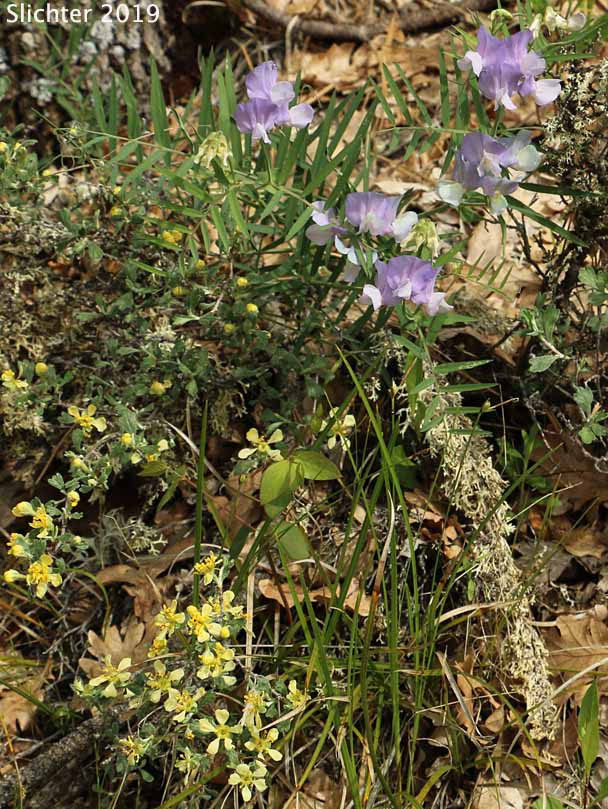 -
- 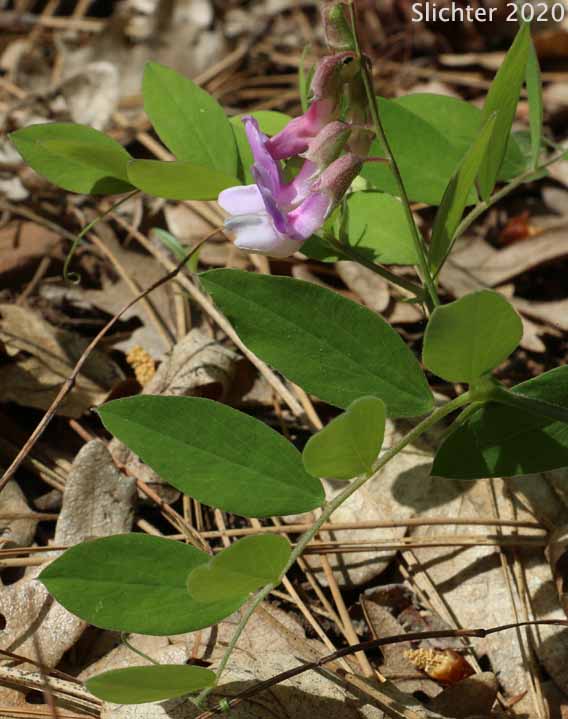
Few-flowered pea in bloom with antelope bitterbrush (Purshia tridentata) in Oregon white oak forest at Brooks Memorial State Park off US 97 near Satus Pass......May 13, 2019 (left) and May 11, 2020 (right).
 -
- 
The photo at left shows few-flowered pea still in bloom along an old jeep road about one-third of a mile west of Tumwater Corral Springs, Simcoe Mountains Unit of the Klickitat Wildlife Area.....May 22, 2022. The photo at right shows a close-up of the flower of Lathyrus pauciflorus var. pauciflorus as seen along the crest of the Columbia Hills in the Columbia River Gorge.........May 14, 2006. Note the short keel in comparison to the long wing petals.
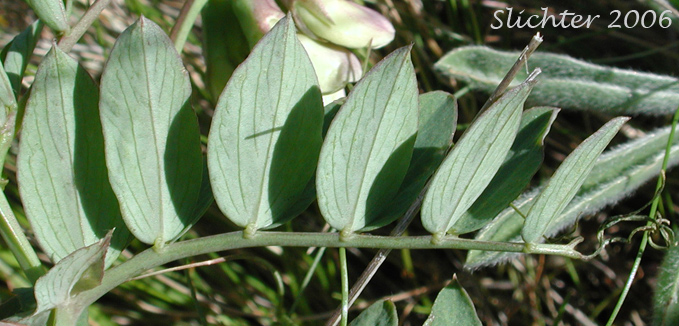
Pinnately compound leaf of Lathyrus pauciflorus
var. pauciflorus as seen at the crest of the Columbia Hills.........May 14, 2006.
 -
- 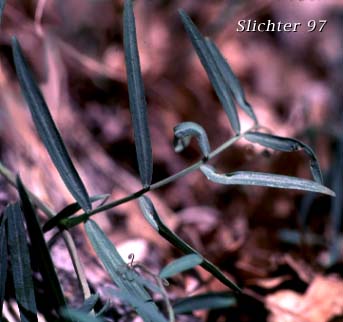
Few-flowered pea (var. pauciflorus) along Highway 97 through the Yakima Indian Reservation.........May 10, 1997.
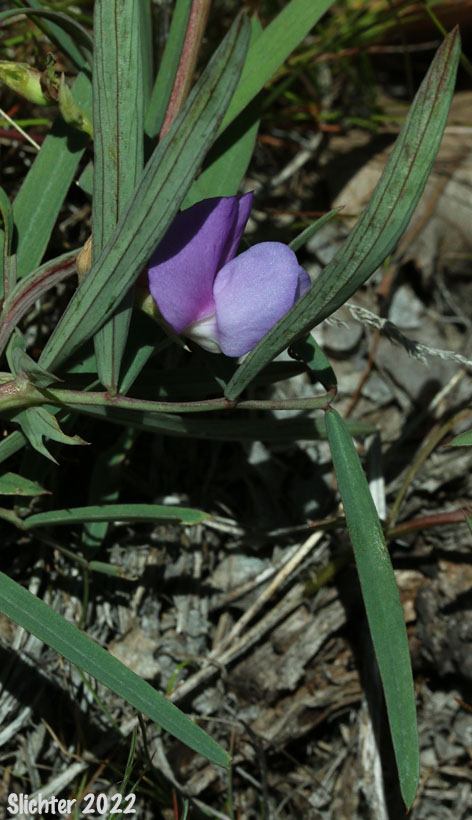
Few-flowered pea beginning to bloom in open oak woodlands about one-half mile west of Tumwater Butte, Simcoe Mountains Unit of the Klickitat Wildlife Area.......May 1, 2022.
Paul Slichter










